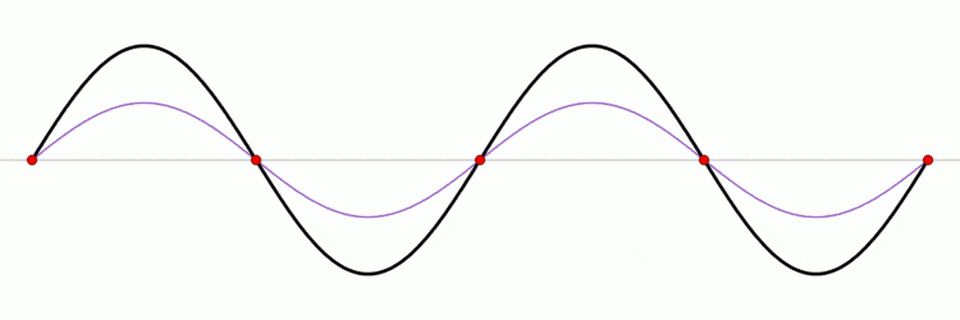Seiche
Primary reference(s)
WMO, 2011. Guide to Storm Surge Forecasting, WMO No. 1076. World Meteorological Organization (WMO). Accessed 13 October 2020.
Additional scientific description
Similar in motion to a seesaw, a seiche is a standing wave in which the largest vertical oscillations are at each end of a body of water with very small oscillation at the ‘node’, or centre point, of the wave. Standing waves can form in any enclosed or semienclosed body of water, from a massive lake to a small coffee cup (NOAA, 2018).
The graphic shows a standing wave (black) depicted as the sum of two propagating waves travelling in opposite directions (blue and red) (NOAA, 2018).

Metrics and numeric limits
Not applicable.
Key relevant UN convention / multilateral treaty
Not applicable.
Examples of drivers, outcomes and risk management
Seiches are typically caused when strong winds and rapid changes in atmospheric pressure push water from one end of a body of water to the other. When the wind stops, the water rebounds to the other side of the enclosed area. The water then continues to oscillate back and forth for hours or even days. Earthquakes, tsunamis, or severe storm fronts may cause seiches along ocean shelves and ocean harbours (NOAA, 2018).
Lake Erie is known for seiches, especially when strong winds blow from southwest to northeast. These have caused a number of notable events: in 1844, a 22-foot seiche breached a 14-foot-high sea wall killing 78 people and damming the ice to the extent that Niagara Falls temporarily stopped flowing; and as recently as 2008, strong winds created waves 12 to 16 feet high, leading to flooding near Buffalo, New York (NOAA, 2018).
Another example is Lake Pontchartrain, Louisiana, which is known to routinely form small seiches after the passage of afternoon squall lines during summer (NOAA, 2018).
References
NOAA, 2018. What is a seiche? National Ocean Service, National Oceanic and Atmospheric Administration (NOAA). Accessed 26 November 2019.